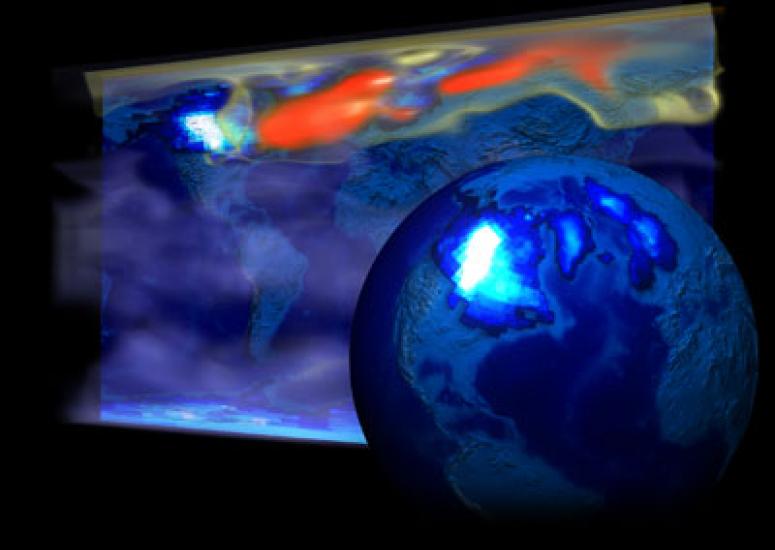-
A test run for satellite chemical sensors
A new study led by NCAR scientist David Edwards is the first to apply the concept of Observing System Simulation Experiments to chemical weather (predicting pollution events and variability in the atmosphere’s chemical composition).
- Air Quality
-

New cause for past global warming revealed by massive modeling project
By simulating 8,000 years of climate, a team led by scientists from the University of Wisconsin–Madison and NCAR has found a new explanation for the last major period of global warming, which occurred about 14,500 years ago.
- Climate
-

Solar Cycle Linked to Global Climate, Drives Events Similar to El Niño, La Niña
Establishing a key link between the solar cycle and global climate, new research led by the National Center for Atmospheric Research (NCAR) shows that maximum solar activity and its aftermath have impacts on Earth that resemble La Niña and El Niño events in the tropical Pacific Ocean.
-

New NCAR System May Guide Transoceanic Flights Around Storms and Turbulence
NCAR is developing a prototype system to provide aircraft with updates about severe storms and turbulence as they fly across remote ocean regions.
-
Connecting the upper and lower atmosphere
An experimental modeling study by a team of scientists that includes NCAR’s Hanli Liu (High Altitude Observatory) points to the propagation of waves upward from the lower atmosphere as a driver for variability in the ionosphere. The research is an important step toward better understanding space weather.
- Sun + Space Weather

